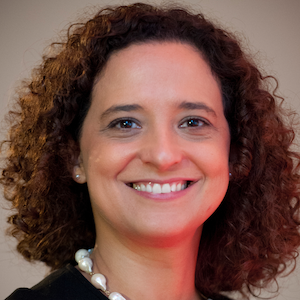Article
Basophil Activation Test of Egg Allergy Effective, Required Fewest Oral Food Challenges
Author(s):
These new findings may lead to a more accessible and rigorous approach to diagnosis, with a possibility of reduction of over-diagnosis.
Alexandra F. Santos, MD, PhD
Credit: EAACI.org

The basophil activation test (BAT) of food allergy to egg is the most accurate diagnostic test and requires the fewest oral food challenges (OFC), according to recent findings.1
These findings bring new information to the conventional view that double-blind placebo-controlled food challenges (DBPCFC) are the ideal form of food allergy diagnosis. As the study’s investigators point out, DBPCFC can lead to allergic reactions with varying levels of severity.
The research was authored by Alexandra F. Santos, MD, PhD, from the Department of Women and Children's Health (Pediatric Allergy) of King's College London’s School of Life Course Sciences.
“Our hypothesis was that the BAT, being a functional test, was more accurate than tests that measure the presence of allergen-sIgE to confirm the diagnosis of BE and LCE allergies,” Santos and colleagues wrote.
The investigators’ hypothesis followed a prior set of studies on peanut allergy in which BAT was found to have been to be a superior diagnostic test.2
Background and Findings
The investigators conducted the BAT 2 study as a cross-sectional diagnostic trial in London. Children who were suspected of having IgE-mediated allergy to egg, cow's milk, sesame, or cashew nuts were recruited by the team from specialized pediatric allergy clinics.
The research team sought to either confirm or refute the diagnoses through a diagnostic work-up. Eligible participants for the study were referred by various physicians working in pediatric allergy specialist clinics.
The screening telephone visits in the study were conducted by the investigators to confirm eligibility of the participants. The children underwent DBPCFCs for eggs. Additionally, the parents or caregivers of these patients answered food frequency questionnaires (FFQ) and 7-day food journals.
Skin prick tests (SPT), basophil activation tests (BAT), clinical evaluations, specific IgE testing, and oral food challenges (OFC) were also conducted. Infants who were under 12 months underwent open OFC instead of DBPCFC. After finishing the DBPCFC, parents or caregivers filled in FFQ regarding consumption of egg every 2 months for 2 years total.
Overall, a total of 150 children were involved in the study and underwent DBPCFCs for baked eggs. Out of these children, 40% were found to have shown a reaction to baked egg, 57% were able to tolerate bked egg, and 3% showed inconclusive results from OFC. Among those who tolerated the product, the investigators noted that 77 of them underwent DBPCFC for lightly-cooked egg, and 16 of them had a reaction.
The research team evaluated several tests to determine their diagnostic performance for identifying baked egg allergy. The tests that ended up showing the best diagnostic performance within each category were as follows: SPT to egg whites and an area under the curve of 0.726, specific immunoglobulin E (sIgE) to egg whites and an area under the curve of 0.776, and BAT to egg with an AUC of 0.783.
The investigators noted that in the age group younger than 2 years, BAT exhibited the highest diagnostic performance and an AUC of 0.867.
When they applied sensitivity and specificity cut-offs of 100% and followed with OFC, the investigators found that diagnostic accuracy reached 100%. BAT demonstrated the greatest reduction in the need for OFC, achieving a reduction of 41%. Their use of sIgE followed by BAT allowed for a reduction of approximately 30% in the number of BATs performed, without substantially raising the number of OFCs.
“The addition of BAT to egg, for patients with equivocal results for sIgE to EW, added precision to the diagnosis and reduced the number of patients undergoing OFC compared to what we would have needed to clarify all equivocal cases, making the diagnostic process safer and more comfortable for patients,” they wrote.
References
- Krawiec M, Radulovic S, Foong RX, et al. Diagnostic utility of allergy tests to predict baked egg and lightly cooked egg allergies compared to double-blind placebo-controlled food challenges. Allergy. 2023 Jul 7. doi: 10.1111/all.15797. Epub ahead of print. PMID: 37417650.
- Santos AF, Douiri A, Becares N, et al. Basophil activation test dis- criminates between allergy and tolerance in peanut-sensitized chil- dren. J Allergy Clin Immunol. 2014;134(3):645-652. doi:10.1016/j. jaci.2014.04.039.





